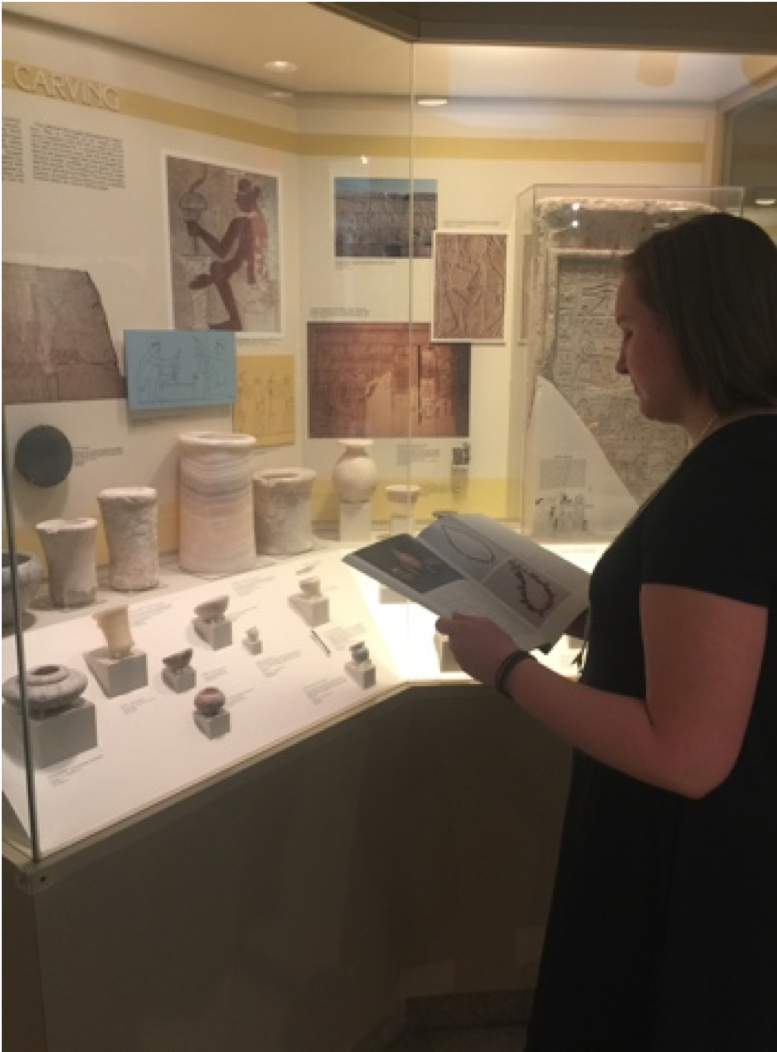Museum Studies Intern at the Carnegie Museum of Natural History – Spring 2019
As an anthropology major, I never expected to find myself sitting at a desk in the Paleontology Department of the Carnegie Museum of Natural History (CMNH). It is rather curious that the offices of both the Anthropocene and Anthropology are housed alongside invertebrate and vertebrate paleontology, but the dynamics of these interdepartmental relationship seems to bolster, rather than hinder, academic and research pursuits.
During my time at my borrowed paleontology desk, I undertook a database project in which I compiled object data into an accessible and adaptable spreadsheet. This Excel spreadsheet was then data merged with InDesign to create usable object cover sheets for refining the Egyptian collection in preparation for the new Egypt on the Nile exhibition. The commencement of my internship with Joint Assistant Curator of Science and Research Dr. Erin Peters began in early January at the Egypt on the Nile: Advisory Team Meeting, a two-day National Endowment for the Humanities (NEH) workshop. I had the privilege of networking with museum professionals both internal and external to the CMNH.
The scope of my database actually changed over the course of the semester, beginning with a much more comprehensive list that included more detailed object data. This endeavor proved to be too great of an effort to finish in its entirety before the NEH submission deadline. Instead, Dr. Peters and I coordinated a scaled-down version of the spreadsheet with information most relevant to the immediate stage of exhibition planning.
This change of course proved to be most significant in terms of personal development. I was struggling to conceptualize the scope of the project, and I felt despondent that the work I was doing was futile. I felt that I was recopying an already existing database, when in fact the database infrastructure for refining specific object data variables did not exist. Dr. Peters proved to be an invaluable resource throughout the semester. From disclosing the challenges of the museum profession to a naïve museum studies student to relating shared personal and professional life experiences, Dr. Peters not only revealed to me the realities of the museum profession, but she also reinvigorated my interest and passion in my internship project and my museum studies program. Although my acquaintance with Dr. Peters has been brief, I feel that I have learned invaluable lessons from my internship with her.

